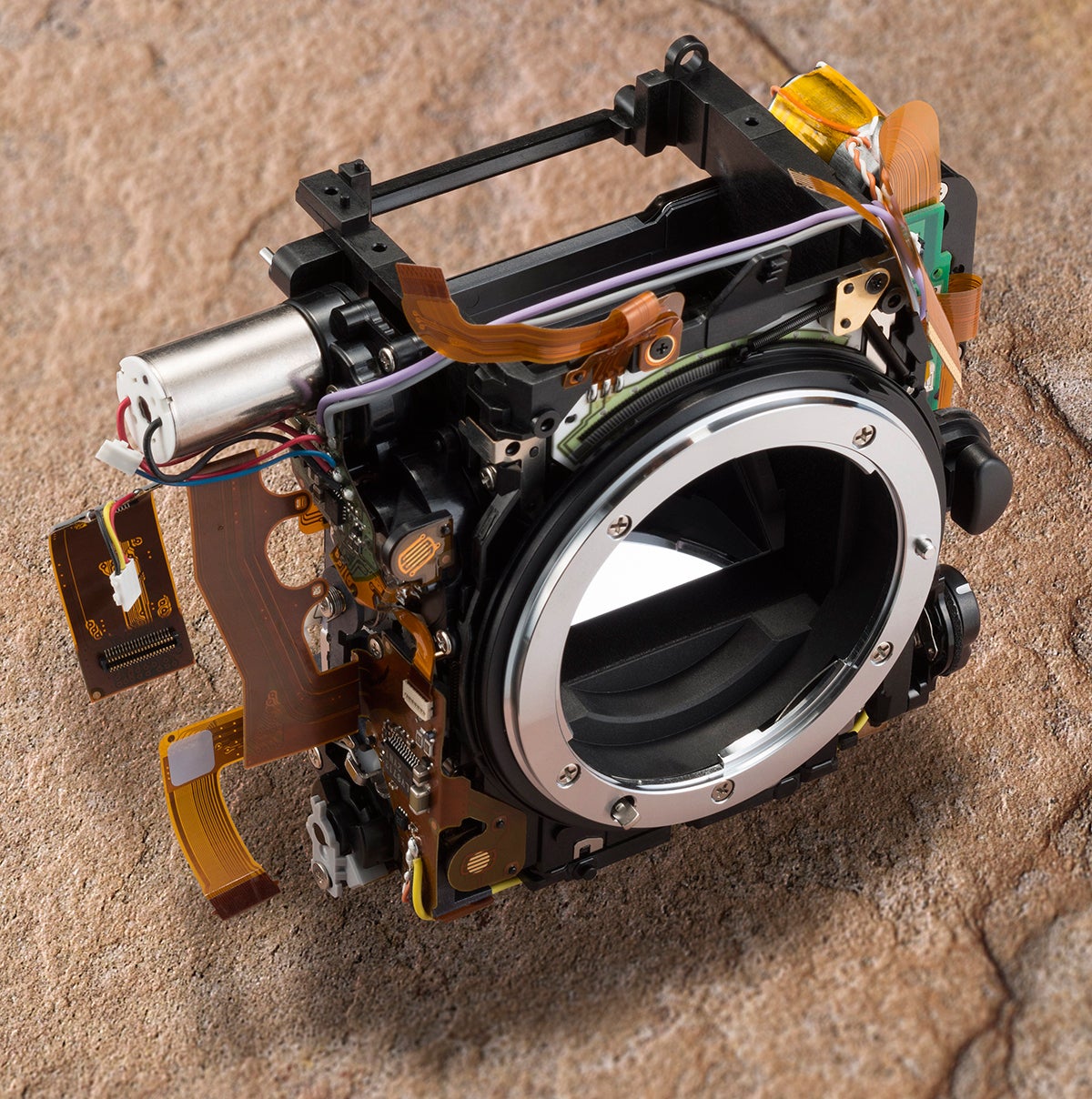Bob Newman has an in-depth look at Nikon’s innovation in camera construction
One of the prestige features of top-end cameras is ‘magnesium construction’. What this means varies from manufacturer to manufacturer. Mirrorless cameras tend to be constructed around a rectangular metal tube, in much the same way as Oskar Barnack’s original Leica, where the body was made with a flattened piece of telescope tubing. SLRs are somewhat different, being built around the mirror box, which maintains the all-important alignment between lens and sensor.

Most DSLRs are built around a plastic mirror box, to which the lens mount and other components are attached
Apart from three top-end cameras (the Canon 1D X, the Nikon D4s and D810), all available mainstream DSLRs have a plastic mirror box. The more expensive magnesium body cameras have non-structural magnesium alloy skin panels applied over this plastic chassis, shown in the publicity shots used to promote the ‘all-metal’ credentials. This has left Nikon with a publicity problem, since their cameras all use a plastic front panel, up to and including the top-end professional models. For those, a picture of the metal chassis serves to confirm its metal body credentials. For the lower end enthusiast models, Nikon has to carefully manage the publicity shots.
With the advent of the D750, Nikon’s marketing people have been able to replace the metal-body mantra with a new one, ‘the carbon-fibre reinforced monocoque construction’. This does, in truth, refer to a genuine innovation in camera construction that Nikon first introduced with the D5300. It has been made possible by a new material introduced by the Japanese chemical company Teijin. This material is a Carbon Fibre Reinforced Thermoplastic (CFRTP) called ‘Sereebo’.

Nikon’s latest DSLR, the D750, employs magnesium alloy top and rear panels, and a front plate made from carbon-fibre reinforced plastic
The main innovation is that the material comes as plastic pellets already loaded with carbon fibres that can be fed straight into an injection-moulding machine to make moulded parts of superior strength and rigidity. Nikon could have simply substituted the existing polymers with Sereebo but instead have decided to use the characteristics of the material to produce a new construction principle, called monocoque, using an analogy for cars built with structural skins rather than a chassis.
In a conventional DSLR the internal components are attached to the mirror box using metal brackets and plates, the combined assembly forming a chassis from which the skin can be detached. In Nikon’s new design the ‘chassis’ is the Sereebo front panel, to which is attached the mirror box and other components, resulting in a weight saving and, in all probability, a cost saving.




